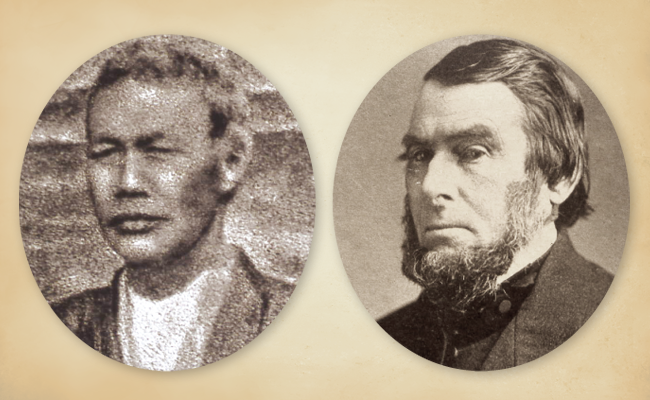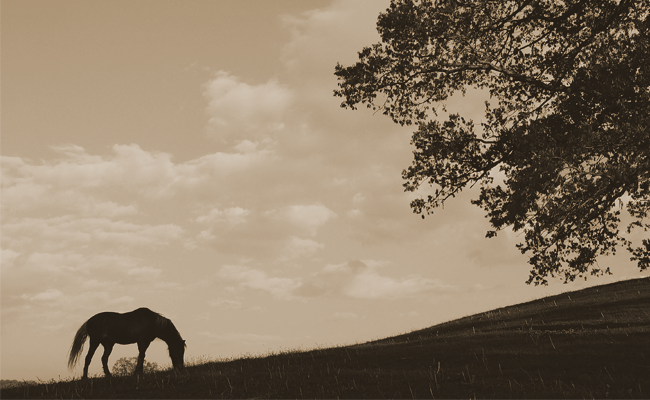Manjiro story
Manjiro rescued by Captain Whitfield
In 1841 a young Japanese boy of 14 years named Manjiro was the man of his family having lost his father at the age of eight. His only brother was older but quite sickly. He sought to be a fisherman in order to help support his mother (Shio) and four siblings. From his village of Nakanohama he journeyed to the port of Usa 90 miles to the northeast.
Finally he was allowed to join a crew of four others and they sailed on January 5th to search for their catch of bonito. Being the youngest, Manjiro’s duties included cooking (mostly rice) and unloading the nets when pulled onto the boat.
Two days later the ship was caught in a terrifying storm, which blew it off course to Torishima Island where it crashed on January 13th. The five members of the crew barely made it to dry land. Jusuke sustained severe injuries to his leg and had to be cared for by the others.

The following months were spent trying to find food and water as well as looking endlessly for a rescue ship of some kind on the horizon. They barely survived on the sparse foods available in the sea and on land.
Thus, they were a gaunt looking group, which the sailors from the whaling ship, “John Howland”, found when they went ashore to seek fresh water and turtle to supplement their own provisions. It was June 27th and these lost souls had been on the island for six months.
The fishermen were immediately afraid of the sailors who were so big and rough looking. Their fear mounted as they realized they could not communicate with them. They thought they would all die at the hands of these strange men, but had no means of resisting. Following the orders of their commander (Captain William Whitfield), the sailors brought all of them to the ship carrying Jusuke who was injured.
With the five shipwrecked sailors aboard the small boats, the sailors of the John Howland brought them to the ship and presented them to Captain William Whitfield, a kind and just man. He quickly allayed their fears by making sure they were fed and clothed properly. They appreciated that Capt. Whitfield had the cook prepare many rice dishes, which he thought they would enjoy.
Through gestures and signs he learned that they had come from Japan. He could not return them there given the country’s closed-door policy.
The five sailors were amazed by the huge ship and diverse crew. For the next several months they cruised the north Pacific waters catching whales and processing their oil and blubber. Finally in November they docked at the port of Oahu in the Sandwich Islands (Hawaii). The five strangers were well received by the locals and settled in to a new lifestyle.
Soon Captain Whitfield was preparing to leave and he wished to take Manjiro with him to the USA so he could be educated. The other four fishermen were afraid to break up the group after all they had been through together. However, they felt that they had to honor the person who had saved their lives. They left the decision up to Manjiro who quickly agreed to continue on the John Howland with Captain Whitfield.
They headed south in the direction of home during which the Captain decided that Manjiro should shorten his name to Mung and added John to it. Thus, he was known to the crew as John Mung
As they stopped at south Pacific islands Manjiro became aware of several other cultures expanding his knowledge of the world.
Manjiro arrives in Fairhaven/New Bedford
On May 6, 1843 the John Howland sailed into New Bedford harbor and Manjiro got his first glimpse of the land, which would become his second home. After reporting to the owner about the business of the journey and greeting many friends along the way Capt. Whitfield led Manjiro across the bridge to Fairhaven and to his home on Cherry Street. There the captain’s aunt, Amelia, waited to greet them. Thus, this young boy from so far away spent his first night in the USA in the modest house at 11 Cherry St., Fairhaven. He, thus, became the first Japanese person to live in the USA. Others had come before but they were transients.

“Aunt Millie” had prepared the dinner that evening which was filled with the tales of the captain’s adventures both before and after meeting Manjiro. Although he wished to spend more time with his young friend, Captain Whitfield had to depart for his uncle’s home in New York where he would marry his second wife, Albertina, from Bridgewater. His first wife, Ruth, had died prior to his long whaling voyage. He made arrangements with his good friend, Eben Aiken for room and board for Manjiro while he was away. As well, he asked Jane Allen, local teacher, to accept Manjiro into her tutoring class so that he would be somewhat prepared to attend his first formal schooling in the coming autumn. Both of these friends lived in the immediate area of Poverty Point, which made all of the arrangements quite convenient.
Manjiro first attended the Old Oxford Schoolhouse, which had to accommodate students of all ages, and quickly he became one of the class leaders. During this time the Captain had returned from New York with Albertina and had purchased a farm on Sconticut Neck where Manjiro would continue his involvement with his kind and hospitable hosts.
One big advantage of farm was that Manjiro was able to learn to ride a horse, which was reserved for Samurai and officials in Japan. He helped with all of the chores and played with the Captain’s little son, William for whom he developed a deep fondness. This was particularly helpful to Mrs. Whitfield when the Captain left them for another whaling voyage.
Because the Old Stone Schoolhouse was quite a distance from the farm Manjiro was accepted at the local, but smaller, school located where the top of his lane met the main road.
Although he was somewhat of a curiosity at first, Manjiro was quickly accepted by folks in the area due to his polite manner and eagerness to learn. Once he had received a decent basic education he wanted to learn about navigation, which had intrigued him while he was on the whale ship. He had difficulty understanding how a ship could go far out to sea and later return to a precise point without being able to observe land.
Through a connection with a friend Captain Whitfield had him accepted to study at the Bartlett School where he could learn advanced mathematics, navigation and surveying. All of these skills along with coopering (which he learned through an apprenticeship in New Bedford) would later serve him and his fellow Japanese extremely well given that his country had been closed to the outside world for so long.
Despite his appreciation for all that had been done for him, Manjiro kept the memory of Japan and his mother close to his heart and longed for the day when he would be able to return there. As well, he was anxious to explore the possibility of Japan re-opening seaports to ships from many countries in need of supplies.
Manjiro heads for home
As time passed in Fairhaven Manjiro longed for the time when he might return to Japan. One way in which he thought this might be possible was to go to sea on a whaler and possibly he would sail near Japan. He found his chance with Captain Ira Davis on the whaling bark Franklin. Thus, on May 16, 1846 they sailed from New Bedford for the far reaches of the globe including Japan. They traveled east and eventually came to the area of Japan. When they encountered some Japanese fishermen Manjiro tried to talk to them but they did not understand his language and he ultimately had to stay on the Franklin and return to New Bedford. On the way they stopped in Hawaii and re-met his former crewmates. He was saddened to learn that Jusuke had died of the original injuries he received to his leg when they were shipwrecked.
Instilled with the Japanese virtue of filiality he never lost hope to return to his honorable mother. Manjiro contemplated how he might return to Japan given that the whaling industry was declining. About this time gold was discovered in California and "gold fever" was sweeping the nation. Manjiro looked to this opportunity to earn enough money to take him and his companions back to Japan. Thus, on November 5, 1849 Manjiro sailed on the Stieglitz, which was bound for San Francisco. The journey took about three months of sailing and Manjiro soon went to Sacramento where he spent the next 70 days accumulating the $600 he needed to support his return to Japan.
Returning to San Francisco he booked passage to Hawaii on the steam-powered merchant ship Eliza Warwick. He found his former companions divided as regards returning to Japan. Denzo and Goemon wished to return to Japan but Toraemon had married a Hawaiian and did not want to chance the return to Japan. Manjiro's plan was to purchase a small boat and have it loaded on a ship headed for China. With the help of their good friend, Rev. Damon, they raised money and purchased a boat they named Adventurer. When the ship passed near the Loo Choo Islands (Ryukyu Islands) the small boat would be lowered and the three mates would row to their native land. Aboard the American ship, Sarah Boyd, the three and their boat left the port of Honolulu on December 17, 1851. Manjiro and his friends knew that this would be the closing chapter of their odyssey. Either they would return to their homes after 10 years or they might be executed for violating the isolation policy of Japan. After about three weeks the ship approached the island of Okinawa, the largest of the Ryukyu's. In a raging sea Captain Whitmore of the Sarah Boyd brought the ship around to the leeward side of the island. Finally the Adventurer was lowered and the three mates had to use all their strength to battle through the waves to reach the shore. At last they were again on Japanese soil. Their fate awaited them.

Home at last
When Manjiro and his two companions awoke on the beach that January day of 1851 they had no idea how the locals would greet them. Indeed the citizens of this remote area were quite afraid of these three strangers who had appeared as if from nowhere. With Manjiro were the brothers, Denzo and Goemon. Their third brother, Jusuke, had died in Oahu.

After a short period the natives had accepted the visitors and the word went out quickly to the surrounding areas about their stories. Immediately local officials determined to take them into custody and interrogate them as to their experiences since leaving Japan. In time they were escorted to Naha, the capital of the Ryukyus, to be further interrogated by Satsuma officials. Satsuma-han was the southern area of present Kyushu and it included the Ryukyus. Later they were to be interrogated at Kagoshima, the capital of Satsuma-han. Although the officials did not trust them, they knew that these returnees had the potential to convey a vast amount of knowledge of the outside world. They were well taken care of but were restricted as to their movements and were not permitted any activities connected to the sea.
Finally they were taken to Nagasaki on orders from the Shogunate where their last formal interrogation took place. Once finished there they were allowed to proceed to their homes. The three arrived in Kochi City around the first of October. After having stopped briefly with the brothers in that area he headed for Nakanohama where he arrived on October 5 after an absence of 11 years and 10 months. He was pleasantly surprised to find his mother still alive although she had thought that he had died long before. He had a joyous re-union with his family but it was short-lived as he was summoned by the Lord of Tosa to Kochi after three days to teach English to samurai and others.
After Commodore Perry first left Japan with his promise of return the Shogun called for Manjiro who, in Dec, of 1853, was appointed as a samurai (jikisan) in direct service to the Shogunate. Because of this honored level of service as a samurai he was allowed to take a second name, an honor seldom afforded an unschooled peasant. He adopted that of his home village of Nakanohama and became Manjiro Nakahama. He indirectly influenced the treaty negotiations with Commodore Perry, which ended the 250 years of Japanese isolation from the world.
In the following years Manjiro was to share his knowledge of western technology in several ways:
- He translated Bowditch’s “The New American Practical Navigator” into Japanese
- He became Professor of Navigation at the Naval Training School
- He wrote,”Eibei Taiwa Shokei” (A shortcut to Anglo-American Conversation). This was the first English text published in Japan
- He initiated the first whaling industry in Japan based on his experiences
- He was the official translator for the delegation which crossed the Pacific to San Francisco on the Kanrin-maru (the first Japanese ship to do so)
- With the new Meiji government he was appointed professor to Kaisei University, later to become known as Tokyo Imperial University (Tokyo Univ.)
In 1870 while traveling with a mission to Europe, Manjiro stopped in New York City and took the opportunity to visit Captain Whitfield in Fairhaven for the last time. They had not met for 21 years.
In 1871 Manjiro suffered a mild stroke, which, for the most part, ended his public life. On November 12, 1898 he died at the home of his son, Toichiro, in Tokyo at the age of 71. According to his wishes he was buried in a Shinto ceremony at the Zoshigaya Cemetery in Tokyo.
※This Manjiro Story is presented by the Whitfield-Manjiro Friendship Society